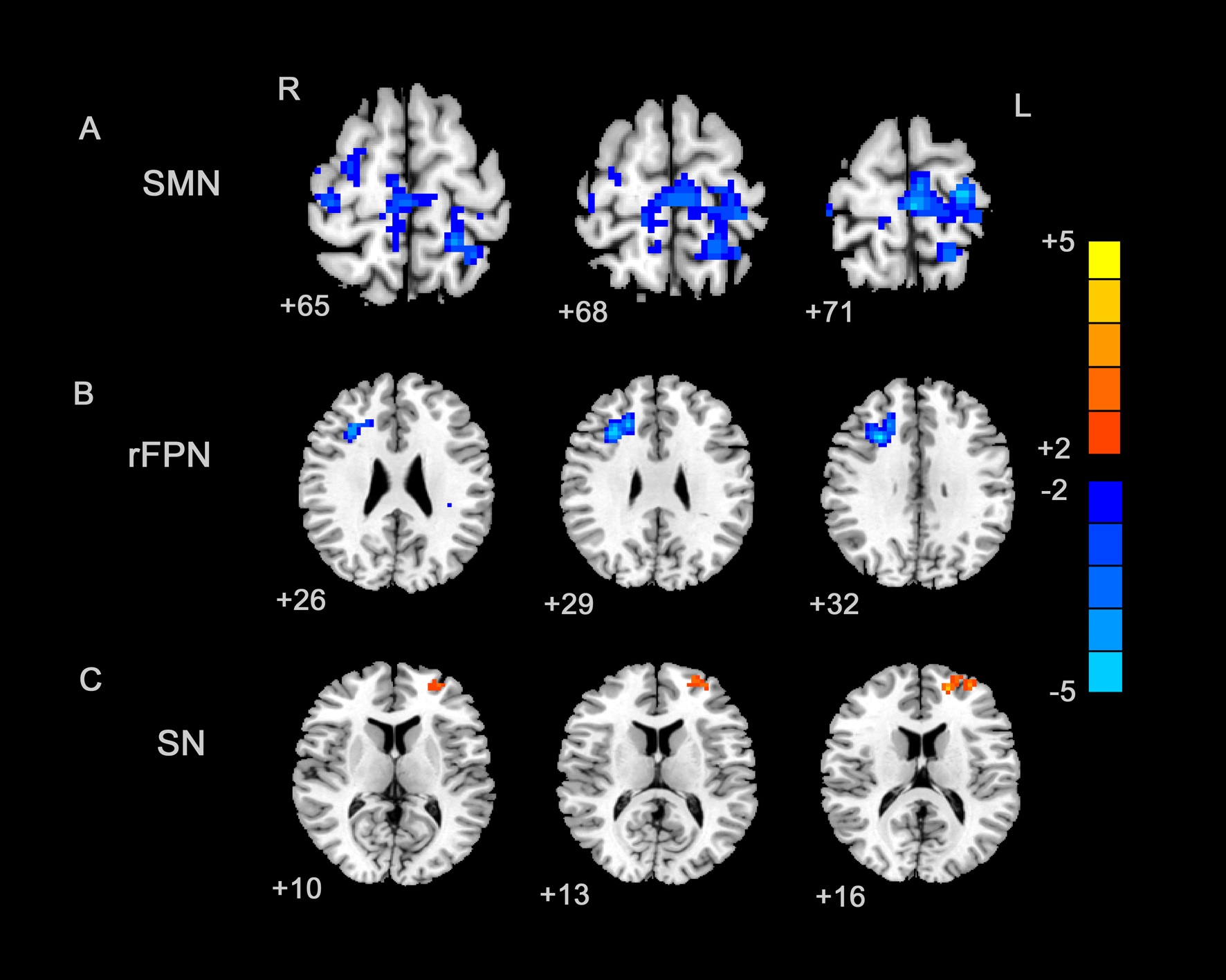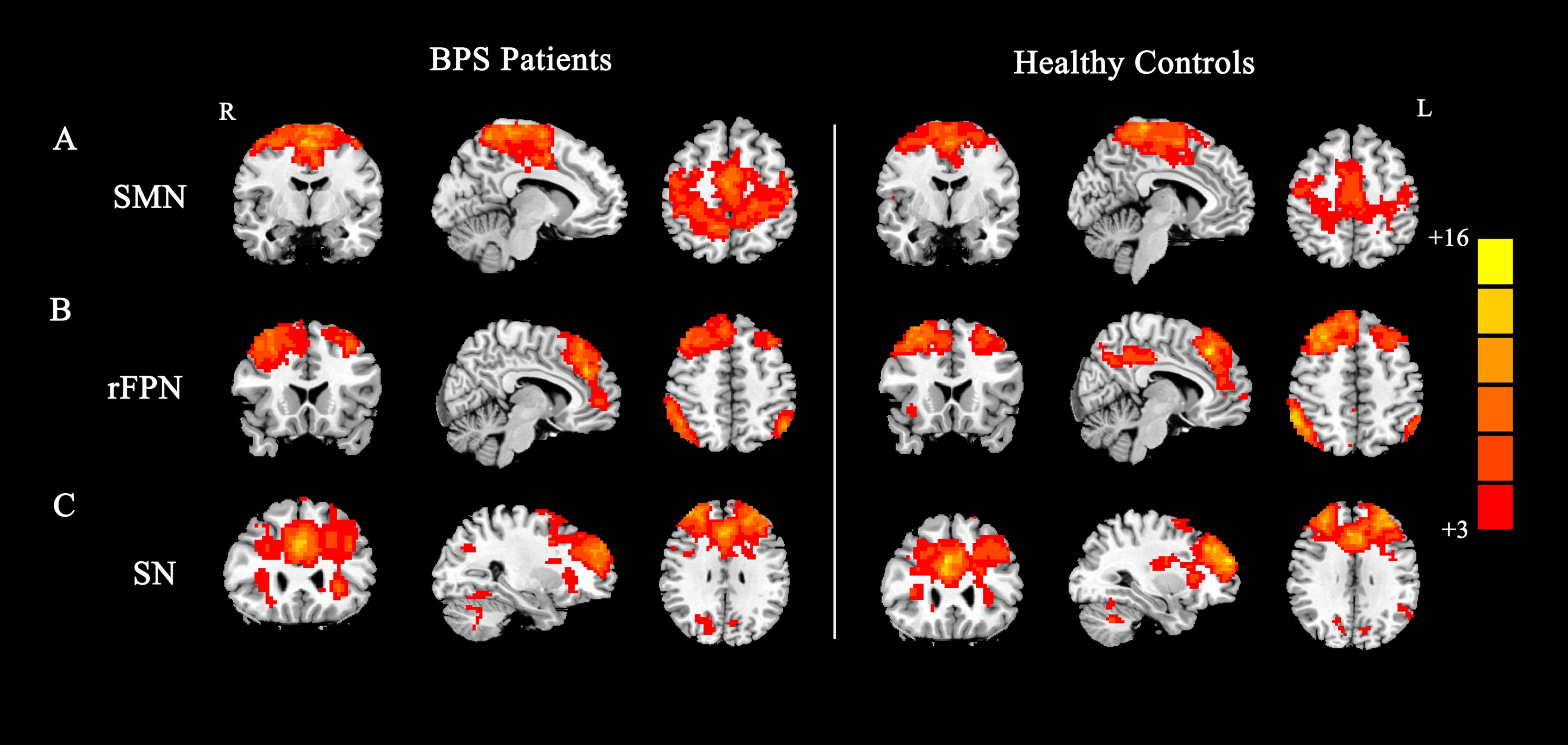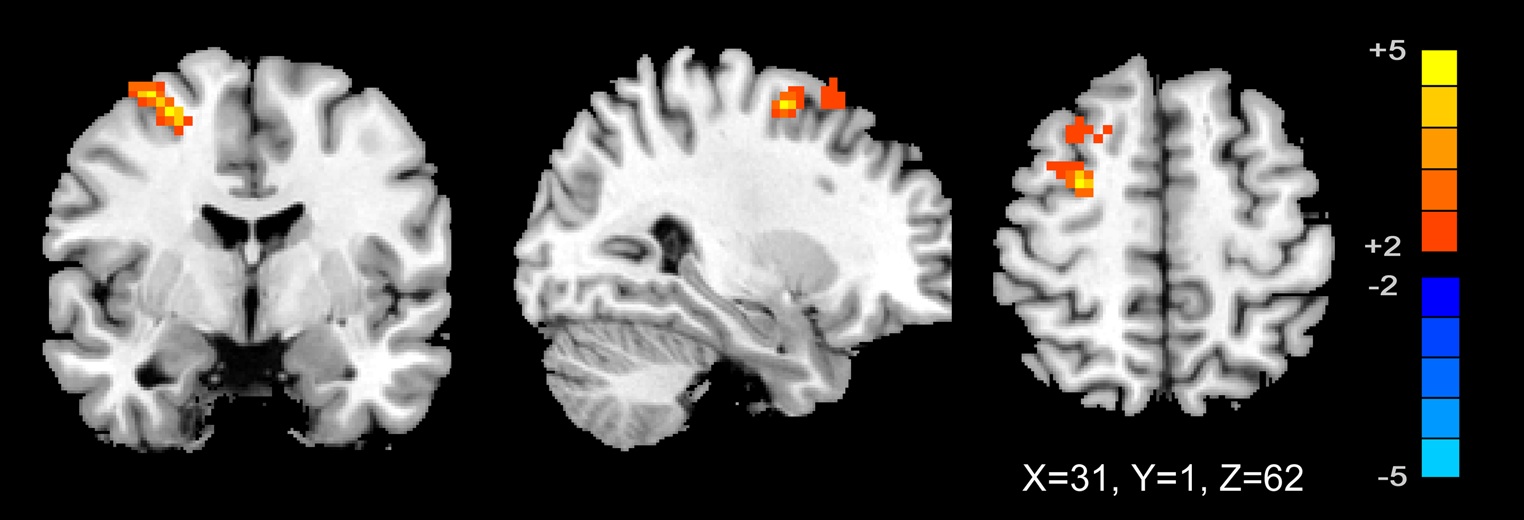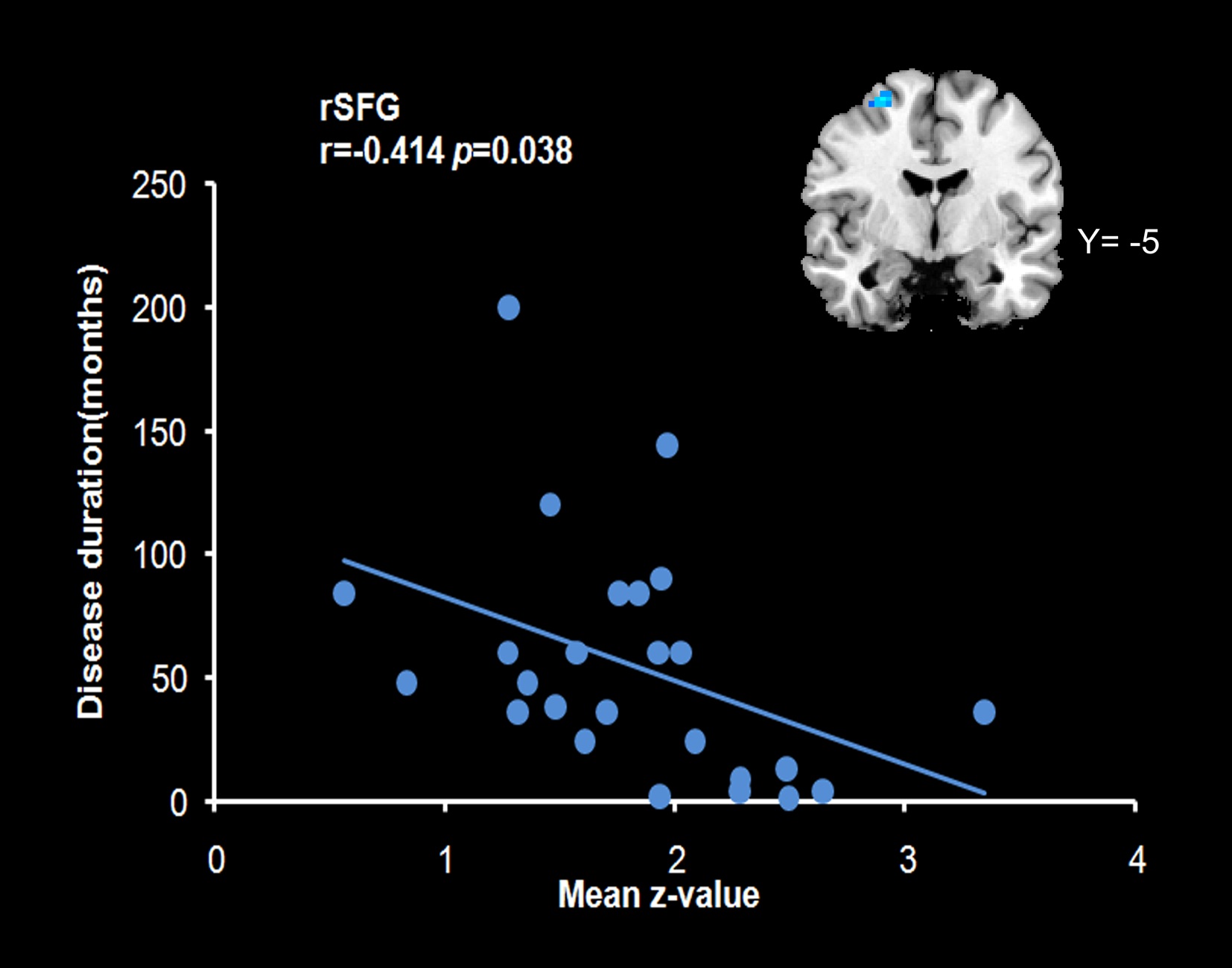Session Information
Date: Thursday, June 8, 2017
Session Title: Dystonia
Session Time: 1:15pm-2:45pm
Location: Exhibit Hall C
Objective: This study aimed to explore altered functional brain connectivity and the possible correlations of these networks with clinical variables in BPS.
Background: Primary blepharospasm (BPS) is a focal dystonia characterized by involuntary blinking and eyelid spasms. The pathophysiology of BPS remains unclear.
Methods: Twenty-five patients with BPS and 25 age-and gender-matched healthy controls received resting-state fMRI scan. Group ICA was performed with the GIFT toolbox.
Results: (1) There were no significant differences in the demographic variables between two groups besides the HAMA scores [table 1]. (2) Comparing with healthy control group, BPS patients exhibited different resting-state connections within sensory-motor network (SMN), right frontoparietal network (rFPN) and salience network (SN) [figure 1, figure 2]. BPS patients exhibited decreased connectivity within SMN that involved regions of the bilateral primary sensorimotor cortex, supplementary motor area, right superior frontal gyrus (BA 6), bilateral precuneus and left superior parietal cortex [table 2]. Within rFPN, decreased connections were observed in the middle frontal gyrus, DLPFC and inferior frontal gyrus [table 3]. Regarding salience network, increased connectivity was observed in the left superior frontal gyrus and middle frontal gyrus (including the DLPFC) [table 4]. We found positive correlation between the left superior frontal gyrus and HAMA scores, but this result was not significant. (3) Among the BPS patients, 12 performed sensory tricks positive (ST+), 9 perform sensory tricks negative (ST-). ST+ as compared to ST- patients exhibited significant higher connectivity in right premotor cortex within SMN [figure 3, table 5]. The results also showed a significant negative correlation between the right superior frontal gyrus and disease duration (Pearson’s correlation r = -0.414, p = 0.038)[figure 4]. (4) We compared the SMN connectivity maps from pre- and after- treatment of 6 patients, but found no significant result.
Conclusions: Multiple neural networks dysfunction may play roles in BPS.
To cite this abstract in AMA style:
X. Huang, Z.-h. Liang, M.-r. Zhu. Multiple Neural Networks dysfunction in Primary Blepharospasm: An Independent Components Analysis Study [abstract]. Mov Disord. 2017; 32 (suppl 2). https://www.mdsabstracts.org/abstract/multiple-neural-networks-dysfunction-in-primary-blepharospasm-an-independent-components-analysis-study/. Accessed December 5, 2025.« Back to 2017 International Congress
MDS Abstracts - https://www.mdsabstracts.org/abstract/multiple-neural-networks-dysfunction-in-primary-blepharospasm-an-independent-components-analysis-study/




